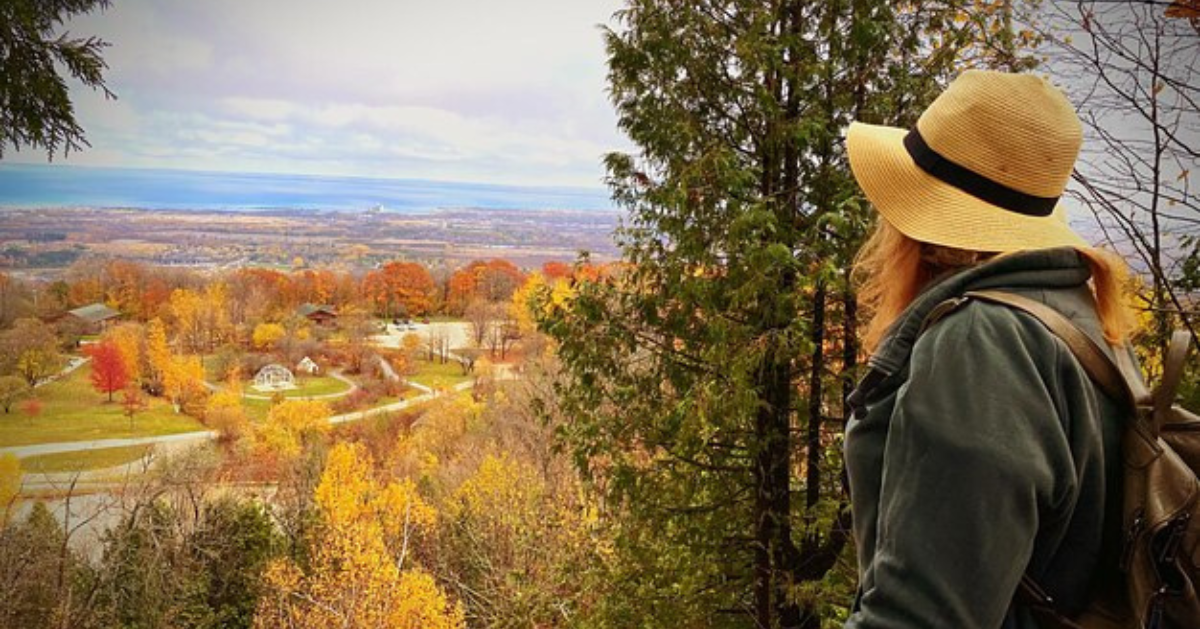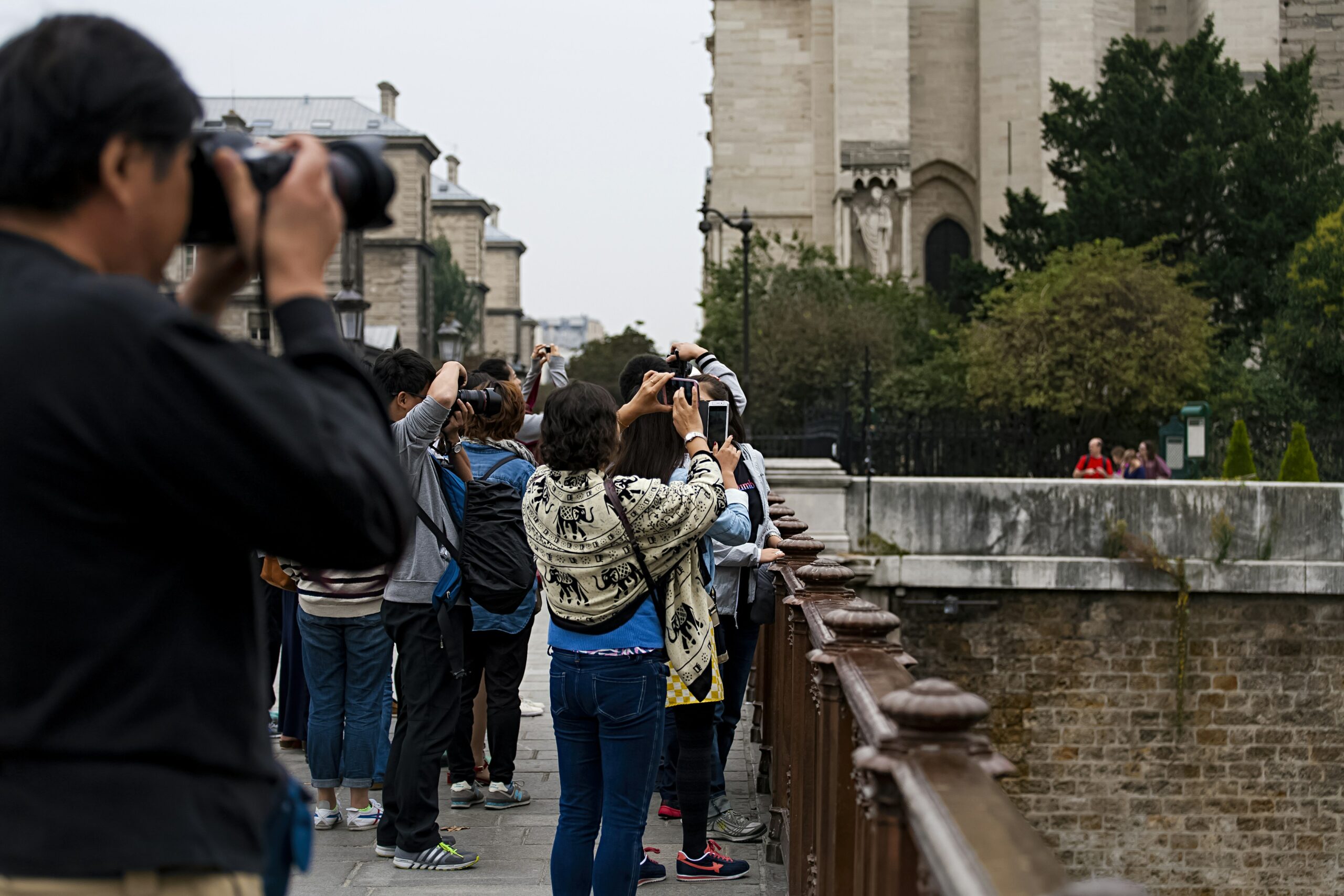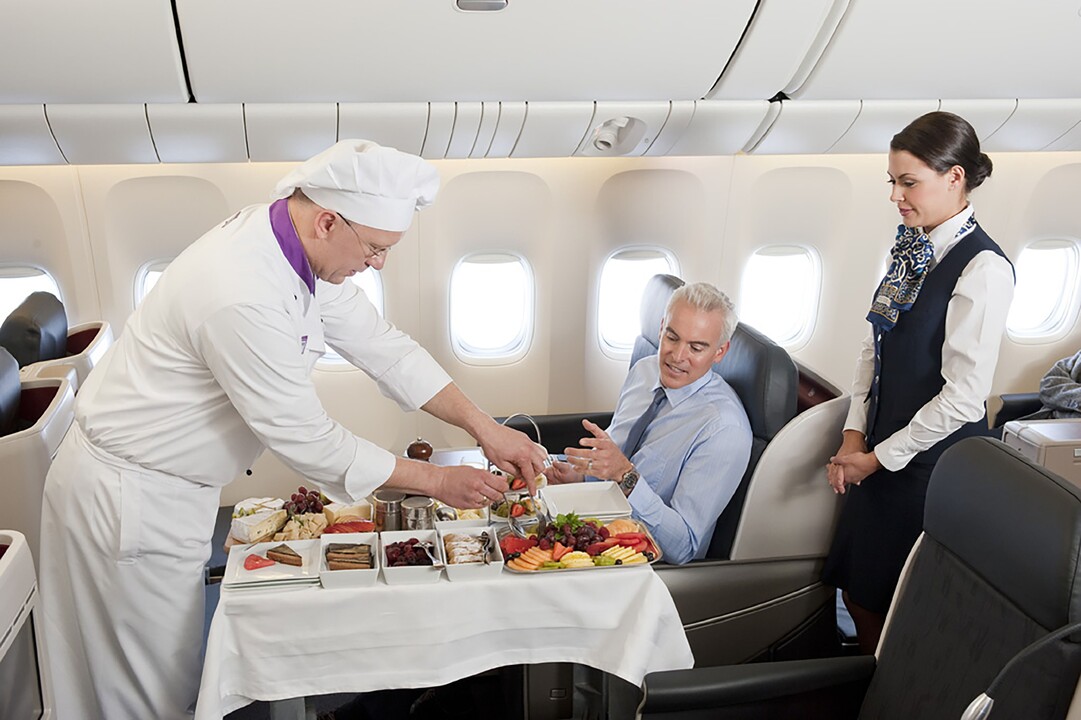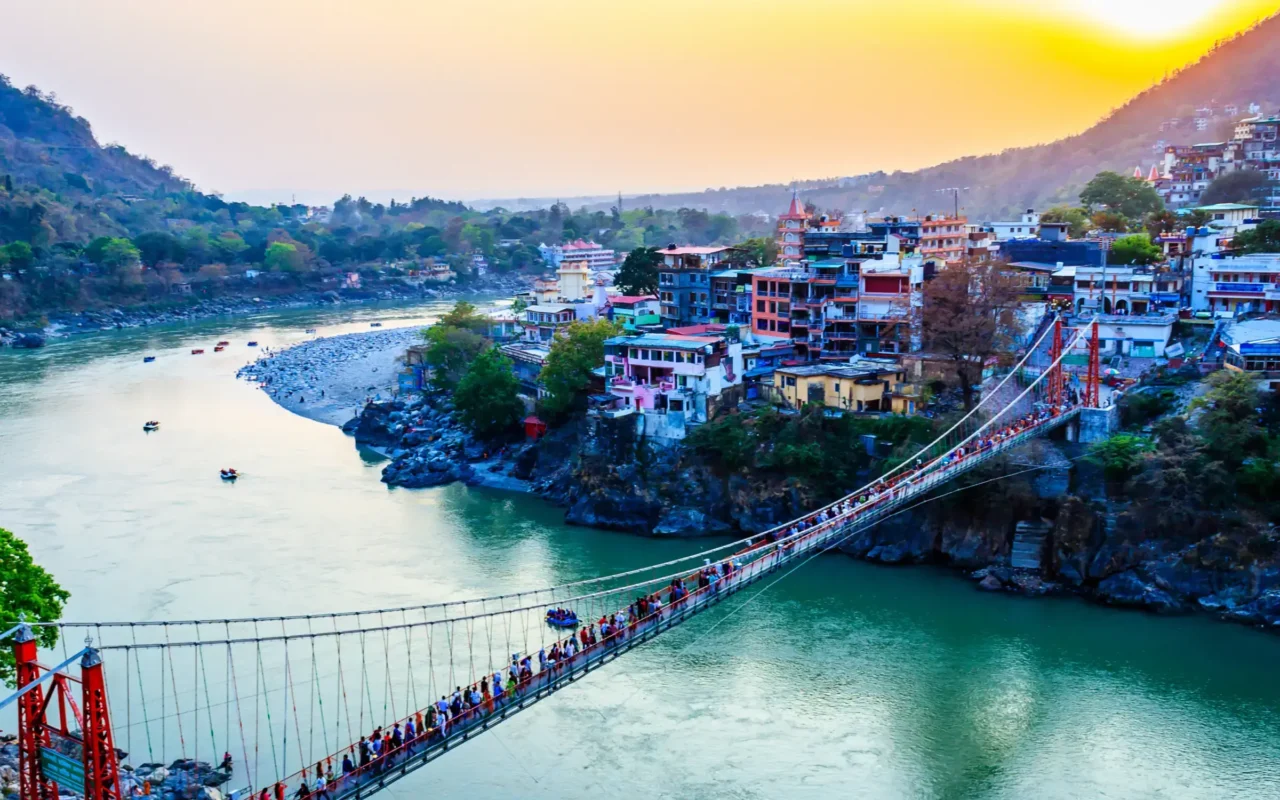Travel
Peekskill: Exploring the Charm of This Vibrant Hudson Valley Gem

Peekskill, a lively city nestled in New York’s scenic Hudson Valley, is a destination rich in history, culture, and natural beauty. Whether you’re a resident, a visitor, or simply curious about this charming place, Peekskill has plenty to offer. From its vibrant arts scene to its breathtaking outdoor spaces, this guide will delve deep into what makes Peekskill a unique and captivating location.
A Brief History of Peekskill
Peekskill’s roots date back to the early 1600s when it was first settled by the Dutch. Over time, the city became an industrial hub, thriving through its manufacturing and shipping industries. Today, remnants of its historic past blend seamlessly with its modern developments, offering a unique charm.
The Arts Scene in Peekskill
Peekskill is widely celebrated for its flourishing arts community. The city is home to numerous galleries, studios, and performance spaces that attract both locals and visitors.
Paramount Hudson Valley Theater
This historic venue is a cultural centerpiece. Hosting concerts, films, and performances, the theater has been a beacon for entertainment since 1930.
Peekskill’s Art Lofts
The city is renowned for its artist lofts, which provide affordable housing for creatives. These spaces contribute to Peekskill’s reputation as a haven for artists.
Outdoor Adventures in Peekskill
If you’re an outdoor enthusiast, Peekskill offers a variety of activities to suit your adventurous spirit.
Riverfront Green Park
Overlooking the Hudson River, this park is a favorite spot for picnics, walking trails, and stunning sunsets. The scenic views are nothing short of spectacular.
Blue Mountain Reservation
This sprawling park is perfect for hiking, biking, and even horseback riding. It’s a natural oasis that offers a quick escape from city life.
Culinary Delights in Peekskill
Peekskill’s food scene is as diverse as its community. From farm-to-table restaurants to casual eateries, there’s something for every palate.
Local Breweries
The city boasts several craft breweries, including Peekskill Brewery, which is known for its innovative beers and lively atmosphere.
Farmers’ Markets
Peekskill’s farmers’ markets are a hub for fresh, locally-sourced produce. They’re a great place to explore the region’s flavors.
A Hub for History Enthusiasts
Peekskill’s historical landmarks offer a glimpse into its rich past.
Lincoln Depot Museum
Dedicated to Abraham Lincoln’s 1861 visit, this museum provides an insightful look into the city’s connection to American history.
Historic Districts
Take a stroll through Peek skill’s historic districts to admire well-preserved 19th-century architecture.
Community Events in Peek skill
Peek skill’s calendar is filled with events that bring the community together.
Peek skill Music Festival
This annual event showcases local and international talent, drawing crowds from all over the region.
Art Walks
Art lovers can explore the city’s galleries and meet the artists during these interactive events.
Shopping in Peek skill
Peek skill offers a blend of boutique shops and antique stores that cater to a variety of tastes.
Main Street Boutiques
The downtown area is home to charming boutiques where you can find unique clothing, gifts, and crafts.
Education and Learning Opportunities
Peek skill takes pride in its educational institutions and learning centers.
Peek skill City School District
The school district is committed to fostering academic excellence and community engagement.
Hudson Valley Community Classes
Residents can explore workshops and classes that cater to diverse interests, from art to technology.
Living in Peek skill
For those considering a move, Peeks kill offers a high quality of life.
Real Estate
The city boasts a mix of historic homes, modern apartments, and scenic properties that appeal to various lifestyles.
Sense of Community
Peekskill’s friendly residents and inclusive atmosphere make it a welcoming place to call home.
Transportation in Peekskill
Getting to and around Peekskill is convenient, thanks to its excellent transportation options.
Metro-North Railroad
Peekskill’s station on the Hudson Line connects the city to New York City, making it ideal for commuters.
Walkable Streets
The city’s walkable downtown area adds to its charm and convenience.
Sustainability Efforts in Peekskill
Peekskill is committed to environmental sustainability, with various green initiatives aimed at preserving its natural beauty.
Recycling Programs
The city has implemented effective recycling programs to reduce waste.
Green Spaces
Peekskill’s dedication to maintaining parks and open spaces ensures a balance between urban development and nature.
Peekskill’s Future Prospects
With ongoing development projects and a growing community, Peekskill’s future looks bright. The city continues to evolve while preserving its rich heritage.
Conclusion
Peekskill is more than just a city; it’s a vibrant community with a perfect blend of history, culture, and nature. Whether you’re exploring its parks, savoring its culinary delights, or immersing yourself in its arts scene, Peekskill offers a unique experience that’s hard to find elsewhere.
FAQs
What is Peekskill known for?
Peekskill is known for its vibrant arts community, historical landmarks, and stunning Hudson River views.
Is Peekskill a good place to live?
Yes, Peekskill offers a high quality of life with a strong sense of community, excellent schools, and convenient transportation options.
What are the top attractions in Peekskill?
Top attractions include Riverfront Green Park, Paramount Hudson Valley Theater, and Lincoln Depot Museum.
How can I get to Peekskill from New York City?
Peekskill is easily accessible via the Metro-North Railroad’s Hudson Line.
What events should I attend in Peekskill?
Don’t miss the Peekskill Music Festival, art walks, and the city’s farmers’ markets.
Travel
How to Avoid Tourist Crowds in Photos at Popular Places in Rome

Rome, Italy, is a dream destination for many travelers. The city is home to some of the most iconic landmarks in the world, such as the Colosseum, the Roman Forum, and the Vatican. While these sites are undeniably stunning, they can also be overcrowded, especially during peak tourist seasons. As a Rome Italy photographer, capturing the beauty of the Eternal City without the hustle and bustle of large crowds can be challenging. However, with a few expert techniques and the right planning, it is entirely possible to take stunning, crowd-free photos at some of Rome’s most popular locations.
In this guide, we’ll share insider tips on how to avoid tourist crowds and photograph Rome’s most famous landmarks in all their glory. Whether you’re a seasoned photographer or an enthusiastic traveler with a camera, these strategies will help you capture Rome in its most serene form.
Timing is Everything
The key to avoiding crowds in Rome is timing. Popular tourist sites tend to be packed during certain hours of the day, especially around midday when most tourists arrive. To avoid these crowds and ensure the best possible lighting for your photos, you’ll need to plan your visit around the optimal times.
Early Morning Magic
One of the most effective ways to get a crowd-free shot is by getting up early. The early hours of the morning, right after sunrise, are the best time to capture iconic locations like the Colosseum, Trevi Fountain, and the Spanish Steps.
Why early mornings?
- The light is softer and more flattering, which makes for better photographs.
- Tourist crowds are sparse, allowing you to take clean shots without distractions.
- The air is cooler, and the city is quieter, giving you a more peaceful experience.
Arriving at these sites right when they open, or even a little before, will give you an exclusive opportunity to capture these locations at their best.
Golden Hour
Golden hour—the period just after sunrise or before sunset—offers some of the most beautiful natural light for photography. The light is warm and diffused, and it creates a magical atmosphere that makes for stunning photos. During golden hour, many of Rome’s most famous landmarks, such as the Pantheon and St. Peter’s Basilica, are bathed in beautiful light.
To make the most of golden hour:
- Research sunrise and sunset times in advance.
- Be ready to shoot about 30 minutes before and after the official sunrise or sunset time.
- Choose your location carefully to ensure the best angle for the light.
By planning your shoots during golden hour, you’ll avoid the harsh midday sunlight while also avoiding the crowds that usually appear later in the day.
Night Photography
While the morning may be the best time for some places, nighttime can also offer a unique opportunity to photograph Rome’s landmarks without large crowds. At night, many tourist attractions are illuminated, creating a different ambiance than what you would find during the day.
Places like the Trevi Fountain or the Colosseum are beautifully lit after dark, providing dramatic and atmospheric photos. Furthermore, these sites tend to be much quieter at night, giving you the space to capture long exposure shots without the interference of tourists.
Choosing the Right Location
In addition to timing, choosing the right spots for your photos can help you avoid large crowds. Many of Rome’s landmarks are extremely popular, so planning your itinerary wisely can make a significant difference in your ability to capture photos without distractions.
Lesser-Known Gems
While the Colosseum and the Vatican are obvious choices for photography, they can also be the most crowded. Fortunately, Rome is full of hidden gems that are just as beautiful but tend to attract fewer visitors. Consider exploring off-the-beaten-path locations such as:
- Villa Borghese Gardens: A peaceful park offering scenic views of Rome with fewer tourists.
- Gianicolo Hill (Janiculum Hill): For breathtaking panoramic views of the city, away from the usual crowds.
- Aventine Hill: A charming neighborhood with less foot traffic and beautiful views of the city, including the iconic keyhole view of St. Peter’s Basilica.
These lesser-known locations provide a more tranquil setting and can still offer spectacular photo opportunities.
Unique Angles and Perspectives
Instead of taking the traditional shot from the main entrance of a landmark, consider shooting from a different angle. For example:
- Capture the Colosseum from the rear, where fewer tourists gather.
- Photograph the Trevi Fountain from a side angle, which often results in more artistic shots.
- Use narrow alleyways and side streets to frame landmarks from a unique perspective.
By thinking creatively and exploring unconventional angles, you can capture images that stand out and avoid the typical tourist-filled shots.
Using the Right Gear
Having the right gear can help you make the most of your time and avoid distractions during a photo shoot. While it’s possible to take great photos with a smartphone, professional photographers often prefer using DSLR or mirrorless cameras for greater flexibility and image quality.
Essential Equipment for Crowd-Free Photography
- Wide-angle lens: A wide lens is perfect for capturing large landmarks or scenic views without the need to step back into crowded areas.
- Tripod: Especially useful for capturing long exposure shots during golden hour or at night.
- Remote shutter release: A useful tool for avoiding camera shake when photographing without a tripod.
By bringing the right equipment, you can quickly set up your shots and ensure high-quality images without the need to linger in crowded areas.
Working with a Professional Photographer
Sometimes, it’s worth hiring a professional photographer to help you capture the perfect shot in Rome. A professional photographer, such as “Mike Kire,” has extensive experience in dealing with crowded locations and knows the best times, angles, and techniques to avoid tourists in the frame.
A professional can:
- Help you plan your shoot efficiently, ensuring you visit the most photogenic sites during the least crowded times.
- Offer creative insights into framing and composition.
- Take the pressure off you so you can enjoy the experience and focus on capturing memories, rather than stressing about the crowds.
Practical Tips for Avoiding Crowds in Rome Photos
To further help you, here are some practical tips for avoiding crowds during your photography sessions in Rome:
- Research Opening Hours: Many sites open early or close late, offering times when crowds are fewer.
- Avoid Major Holidays: Roman holidays like Christmas, Easter, and Ferragosto bring in thousands of tourists, so plan your visit around these times.
- Use Local Knowledge: Ask locals for tips on hidden gems and less crowded times to visit popular spots.
- Plan Your Day Strategically: Start with less popular spots early in the morning, then visit crowded places later in the day when tourist traffic has subsided.
- Go Off-Season: Visiting Rome during the shoulder seasons—spring or autumn—often means fewer tourists.
Rome is undoubtedly one of the most photographed cities in the world, and with the right approach, it’s possible to capture its beauty without the crowds. By planning your shoots around the best times of day, choosing off-the-beaten-path locations, and thinking creatively about your compositions, you can create stunning images that showcase the timeless beauty of Rome.
Whether you’re a professional photographer or simply an avid traveler with a passion for photography, these strategies will help you capture Rome at its finest. And if you ever need expert assistance, a professional photographer like Mike Kire can guide you in making the most of your photography adventure in the Eternal City.
With these tips in mind, you’ll be able to avoid the tourist crowds and capture the essence of Rome in all its glory, ensuring that your photos are as timeless as the city itself.
Travel
The Impact of Quality Inflight Catering Service on Passenger Satisfaction

In the realm of air travel, where comfort and convenience are paramount, inflight catering service plays a pivotal role in shaping passenger satisfaction. While travelers often focus on seat comfort, entertainment options, and timeliness, the quality of food and beverage offerings aboard an aircraft quietly yet powerfully influences their overall experience. From the moment passengers take their seats until the flight touches down, the culinary journey can transform an ordinary trip into a memorable one.
Why Inflight Catering Service Matters
Flying, especially on long-haul or premium flights, is about more than just reaching a destination; it’s about the journey itself. The inflight catering service is a key touchpoint that airlines and private operators leverage to elevate this journey. Quality meals, thoughtfully prepared and presented, offer passengers a sense of care and attention that transcends the physical confines of an aircraft cabin.
Food is deeply tied to emotion and culture, and when served well at 30,000 feet, it can evoke comfort, delight, and even excitement. Passengers who receive meals that meet or exceed their expectations are more likely to view the airline favorably, enhancing brand loyalty and encouraging repeat business.
The Elements of a Quality Inflight Catering Service
Delivering high-quality inflight catering service is no small feat. It requires meticulous planning, creativity, and a deep understanding of passenger needs. Quality starts with sourcing fresh, premium ingredients that maintain their flavor and texture even after preparation and packaging for flight. Chefs and culinary experts craft menus that balance taste with nutrition while accommodating diverse dietary requirements—ranging from vegetarian and vegan options to special medical diets and cultural preferences.
Presentation also matters. Attractive packaging and appealing plating can elevate the dining experience, making meals feel less like airplane food and more like a gourmet offering. Attention to detail in service—from timely delivery to courteous interaction—further enhances passenger perception.
The Role of Innovation in Inflight Catering
The evolution of inflight catering service is fueled by innovation, particularly in how meals are prepared, stored, and served. Advances in food technology and logistics have enabled caterers to offer fresher, tastier meals that withstand the challenges of altitude and limited onboard kitchen facilities.
Additionally, customization has become a hallmark of quality service. Passengers increasingly expect personalized menus, whether it’s selecting dishes in advance or enjoying meals tailored to their health goals or taste preferences. Digital platforms now allow seamless communication between airlines, caterers, and passengers to ensure these expectations are met efficiently.
Impact on Passenger Satisfaction
Quality inflight catering service directly influences passenger satisfaction in several profound ways. First, it addresses one of the basic human needs—nourishment—while considering comfort and pleasure. Well-prepared meals can alleviate the fatigue and discomfort often associated with air travel, making journeys more enjoyable.
Second, the availability of diverse and high-quality food options helps passengers feel valued and respected. For instance, offering culturally appropriate meals or accommodating allergies and dietary restrictions signals that the airline prioritizes passenger wellbeing.
Third, the catering experience often serves as a differentiator among airlines and service providers. When flight durations and schedules are comparable, the quality of inflight meals can tip the balance in favor of one operator over another.
Enhancing the Overall Flight Experience
The impact of inflight catering service extends beyond the immediate act of eating. It contributes to the overall ambiance and atmosphere of the flight. A thoughtfully curated menu paired with excellent service can create moments of delight and relaxation, helping passengers feel pampered and cared for.
In premium cabins, inflight catering is often integrated with broader luxury offerings, such as fine wines, specialty coffees, and artisanal desserts. This holistic approach transforms meals into an event, enhancing the prestige of the flight and reinforcing the airline’s commitment to exceptional service.
Even in economy class, improvements in catering quality can positively affect passenger mood and comfort, reducing the stress of travel and creating a more pleasant journey.
Challenges and Considerations
Delivering a high-quality inflight catering service is not without its challenges. The unique environment of an aircraft—limited space, high altitude, and variable temperatures—demands specialized techniques to preserve food safety and flavor. Logistics also play a crucial role, as meals must be prepared on tight schedules and transported securely to aircraft around the world.
Additionally, cost management is essential. Airlines and caterers must balance the desire to offer premium meals with the constraints of budget and pricing strategies. Yet, many recognize that investing in quality catering yields long-term dividends through increased customer satisfaction and loyalty.
Conclusion
Inflight catering service is a vital, though sometimes overlooked, element in the overall passenger experience. Quality food and beverage offerings do more than satisfy hunger—they enrich the journey, foster emotional connection, and influence perceptions of an airline or flight service provider.
As airlines and catering specialists continue to innovate and elevate standards, passengers stand to benefit from tastier, healthier, and more personalized meals at cruising altitude. In doing so, the simple act of eating inflight transforms into a powerful tool for enhancing passenger satisfaction and loyalty, ultimately contributing to the growth and success of the aviation industry.
Travel
Spiritual Tourism in Uttarakhand: Temples, Ashrams & More

Uttarakhand, often referred to as the “Land of the Gods,” is a haven for those seeking spiritual solace amidst the majestic Himalayas. Known for its serene landscapes, holy temples, ashrams, and sacred rivers, this state offers a deeply spiritual experience for both pilgrims and travelers alike. Uttarakhand tourism is renowned for its rich spiritual heritage, with a diverse range of temples, monasteries, and ashrams that attract thousands of visitors each year. Whether you are a devout pilgrim or a seeker of inner peace, Uttarakhand promises a journey of spiritual rejuvenation.
The Spiritual Heart of Uttarakhand
Uttarakhand holds a prominent place in Indian spirituality and religion, with many sacred sites that date back to ancient times. It is home to several revered pilgrimage circuits, particularly the Char Dham Yatra, which includes Yamunotri, Gangotri, Kedarnath, and Badrinath. These shrines are not only significant for their religious importance but also for the breathtaking beauty of their surroundings, which make the journey even more fulfilling.
Char Dham Yatra: The Ultimate Pilgrimage
The Char Dham Yatra is the most famous spiritual journey in Uttarakhand, and it’s an essential part of Uttarakhand tourism. This sacred pilgrimage circuit is considered the spiritual culmination of a devotee’s life.
- Yamunotri: Dedicated to Goddess Yamuna, this temple is located at the source of the Yamuna River. Pilgrims often take a dip in the hot springs near the temple to cleanse themselves of sins before offering prayers.
- Gangotri: The source of the sacred Ganges River, Gangotri holds immense religious significance. It is believed that Goddess Ganga descended here in her divine form. The serene environment and the flowing Ganges add to the spiritual energy of this place.
- Kedarnath: Nestled in the Garhwal Himalayas, Kedarnath is one of the twelve Jyotirlingas dedicated to Lord Shiva. This ancient temple is surrounded by snow-capped mountains, offering a truly awe-inspiring experience.
- Badrinath: Dedicated to Lord Vishnu, this temple is located in the picturesque town of Badrinath. Pilgrims come here not only for spiritual reasons but also to witness the stunning natural beauty that surrounds the temple.
Visiting these four temples offers a complete spiritual journey and is a major draw for those exploring Uttarakhand tourism. The Char Dham Yatra is a once-in-a-lifetime pilgrimage that leaves devotees spiritually enriched.
The Himalayan Temples: Immersion in Divinity
Beyond the Char Dham circuit, Uttarakhand is dotted with numerous other temples, each with its unique spiritual significance. One such temple is the Mahadev Temple in Rishikesh, dedicated to Lord Shiva. Rishikesh itself is an important hub for spirituality and meditation, attracting seekers from around the globe. The sacred town, known for its temples and the iconic Lakshman Jhula, offers a peaceful retreat for those wishing to connect with their spiritual side.
Another significant temple is the Kainchi Dham in Nainital, which was established by the famous Baba Neem Karoli. The ashram here is a peaceful place for devotees and visitors who seek the blessings of the almighty and a quiet environment to meditate and reflect.
Rishikesh: The Yoga Capital of the World
Rishikesh, often referred to as the “Yoga Capital of the World,” is a spiritual hub that has attracted yogis, saints, and spiritual seekers for centuries. Situated on the banks of the holy Ganges River, Rishikesh is a blend of serene natural beauty and deep spiritual energy.
The Triveni Ghat in Rishikesh is one of the most sacred places, where devotees gather for the evening Ganga Aarti. The sight of thousands of oil lamps floating on the river while chanting prayers fills the atmosphere with divinity. Visitors can also explore the many ashrams in Rishikesh, such as the Parmarth Niketan and Sivananda Ashram, which offer courses in yoga, meditation, and spiritual teachings. These ashrams are perfect for those looking to explore their inner self, offering tranquility and a deeper understanding of spiritual practices.
Ashrams of Uttarakhand: A Path to Inner Peace
Uttarakhand is home to numerous ashrams, each offering spiritual guidance, yoga, meditation, and a way of life that emphasizes simplicity and mindfulness. These ashrams are places where seekers can disconnect from the noise of modern life and connect with their spiritual essence.
- Osho Ganga Dham Ashram in Rishikesh offers teachings based on the Osho philosophy of meditation and mindfulness. It provides an environment where one can explore different forms of meditation, including dynamic and silent meditation, helping individuals connect with their higher consciousness.
- Sivananda Ashram, also in Rishikesh, is another prominent center for spiritual learning and practice. It is part of the global Sivananda Yoga Vedanta Centers and offers teachings on yoga, Vedanta, and meditation. This ashram also hosts the renowned International Yoga Festival annually, attracting spiritual practitioners from all corners of the world.
- Swami Dayananda Ashram, located in the peaceful town of Laxman Jhula, offers classes on Vedantic philosophy, yoga, and meditation. The serene environment of the ashram, combined with teachings on self-realization, makes it a perfect place for spiritual growth.
These ashrams play a crucial role in Uttarakhand tourism by offering spiritual seekers a sanctuary for personal growth, tranquility, and enlightenment.
Haridwar: A Gateway to Spiritual Awakening
Haridwar, situated at the foothills of the Himalayas and close to Rishikesh, is another key spiritual destination in Uttarakhand. It is one of the seven holiest places in Hinduism and is famous for its sacred Har Ki Pauri ghat. Pilgrims from across the country visit Haridwar to take a ritual bath in the Ganges, which is believed to cleanse them of sins.
The evening Ganga Aarti at Har Ki Pauri is a grand spectacle, where devotees offer prayers while the chanting of hymns and the sight of hundreds of floating lamps create an ethereal atmosphere.
Spiritual Treks: Connecting with Nature and Divinity
For those seeking a more physical form of spiritual awakening, Uttarakhand offers several spiritual treks. One such trek is the Kedarkantha Trek, which is a perfect blend of adventure and spirituality. As you trek through dense forests, pristine meadows, and snow-covered trails, you can find moments of peace and solitude that will help you connect deeply with your spiritual self.
Similarly, the Valley of Flowers Trek, a UNESCO World Heritage site, offers a stunning landscape of colorful flowers surrounded by snow-capped peaks. This trek offers an opportunity for spiritual reflection amidst nature’s untouched beauty.
Conclusion
Uttarakhand, with its holy temples, sacred rivers, and peaceful ashrams, offers a unique spiritual experience for those seeking inner peace and divine blessings. Whether it’s the revered Char Dham Yatra, the tranquil ashrams of Rishikesh, or the serene temples tucked away in the Himalayan foothills, Uttarakhand tourism provides countless opportunities to explore the spiritual heart of India. For spiritual seekers, pilgrims, and those simply looking for a deeper connection with themselves and nature, Uttarakhand is a destination that will nourish the soul and leave an everlasting impact.
-

 Sports5 months ago
Sports5 months agoThe Ultimate Guide to Ski and Snowboard Equipment, Ski Equipment Rental, and Snowboard Equipment Rental
-

 General7 months ago
General7 months agoStart-094: Unlocking Its Secrets and Understanding Its Power
-

 Entertainment8 months ago
Entertainment8 months agoHulu Error Code Rununk13: A Complete Guide
-

 Entertainment6 months ago
Entertainment6 months agoSoaper.tv: A Comprehensive Guide to Your Streaming Companion
-

 Games5 months ago
Games5 months agoPizza Edition Games: The Ultimate Guide to Fun and Flavor
-

 Uncategorized5 months ago
Uncategorized5 months agoOceanofPDF: Free eBooks Source or Copyright Violation?
-

 Technology8 months ago
Technology8 months agoWhy SBCodez is the Go-To Resource for Aspiring Coders
-

 Apps8 months ago
Apps8 months agoWeb & Store Synergy: The Ultimate Guide to Blogging for E-commerce
